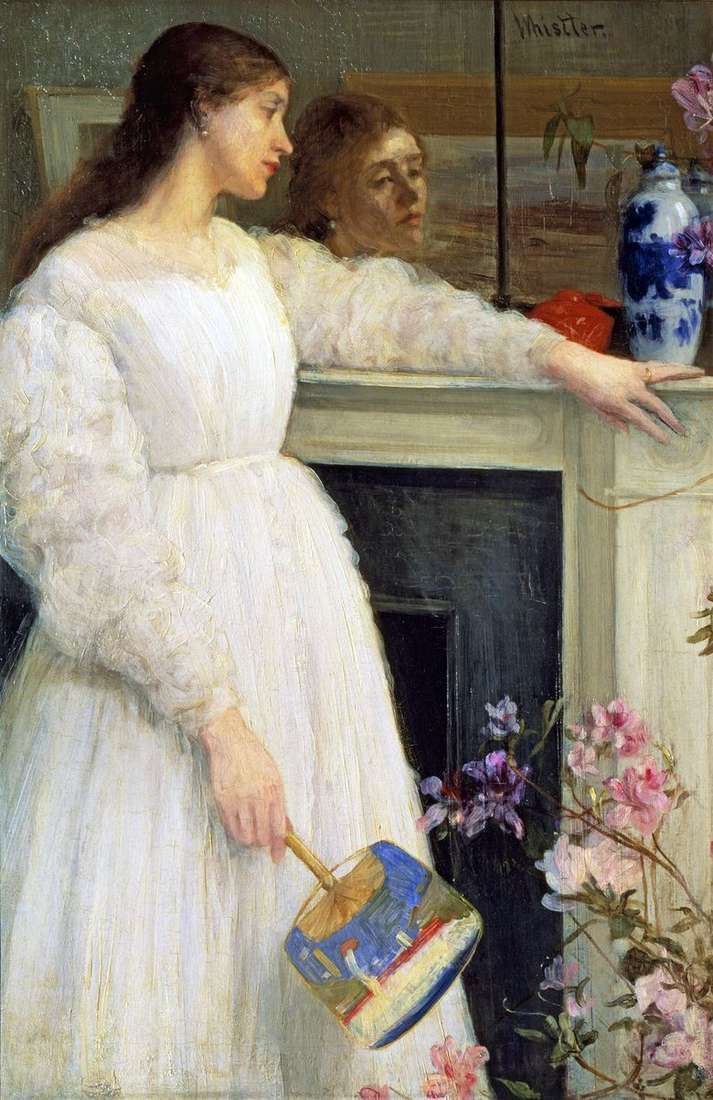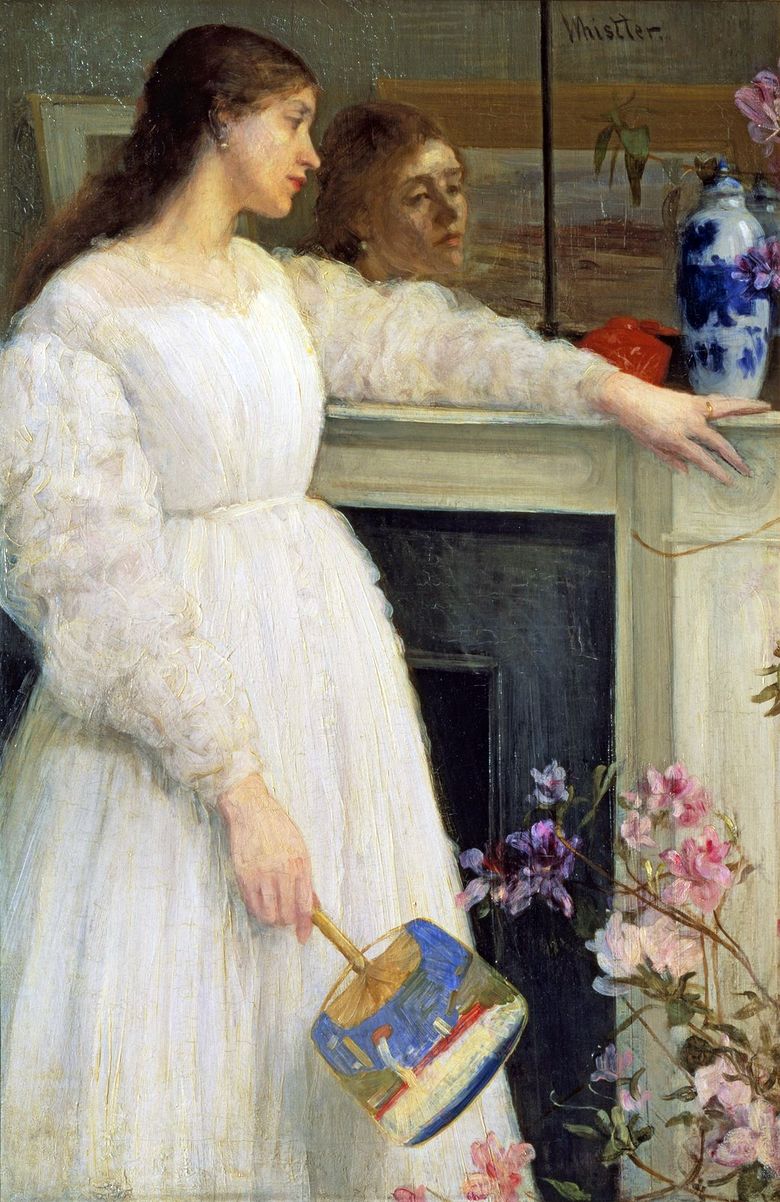
In Whistler’s painting Symphony in White No. 2, there are echoes of Japanese culture. However, the porcelain service, fan and pink flowers, reminiscent of cherry blossoms, are here only details, attention is not accentuated by them: the artist sets himself different goals. On the canvas depicts a young woman who sadly examines the engagement ring on her left hand and, apparently, remembers her beloved, with whom she is currently for some reason in separation. The scene is filled with light sadness, an aura of sad contemplation. The composite reception of mirror reflection emphasizes the mysterious mood of the picture.
“The Girl in White” represents Whistler’s decisive break with realism. In 1864, during a presentation at the Royal London Academy, the picture was surprising and approved by all who, in the words of the poet Charles Baudelaire, considered realistic painting a “war with fantasy.”
In this picture Whistler sought to combine elegance and good taste with fantasy. “Subtlety has always been for him the dominant element, the bearer of the best, the combination of emotion and precision,” one of his friends said about Whistler. Fantasy, refined elegance and elegance, inherent in the artist’s personality and so successfully embodied in the “Girl in White”, lead to the fact that this painting is among the most significant works of Whistler. In 1867, the artist adds to the title of the painting the musical term “Symphony in White No. 2”. In his opinion, the harmony of colors should act on the viewer as a musical work, and therefore Whistler seeks to find a harmonious unity of a large number of shades of white.
 Symphony in White No. 1: Girl in White by James Whistler
Symphony in White No. 1: Girl in White by James Whistler Sea, beach and shapes by James Whistler
Sea, beach and shapes by James Whistler Symphony in White No. 3 by James Whistler
Symphony in White No. 3 by James Whistler Princess of the Porcelain Country by James Whistler
Princess of the Porcelain Country by James Whistler Symphony in White No. 2: una chica de blanco – James Whistler
Symphony in White No. 2: una chica de blanco – James Whistler Harmony in gray and green: a portrait of Miss Cecily Alexander by James Whistler
Harmony in gray and green: a portrait of Miss Cecily Alexander by James Whistler Nocturne in blue and gold: Old Bridge in Battersea by James Whistler
Nocturne in blue and gold: Old Bridge in Battersea by James Whistler Symphonie en blanc n ° 2: Fille en blanc – James Whistler
Symphonie en blanc n ° 2: Fille en blanc – James Whistler